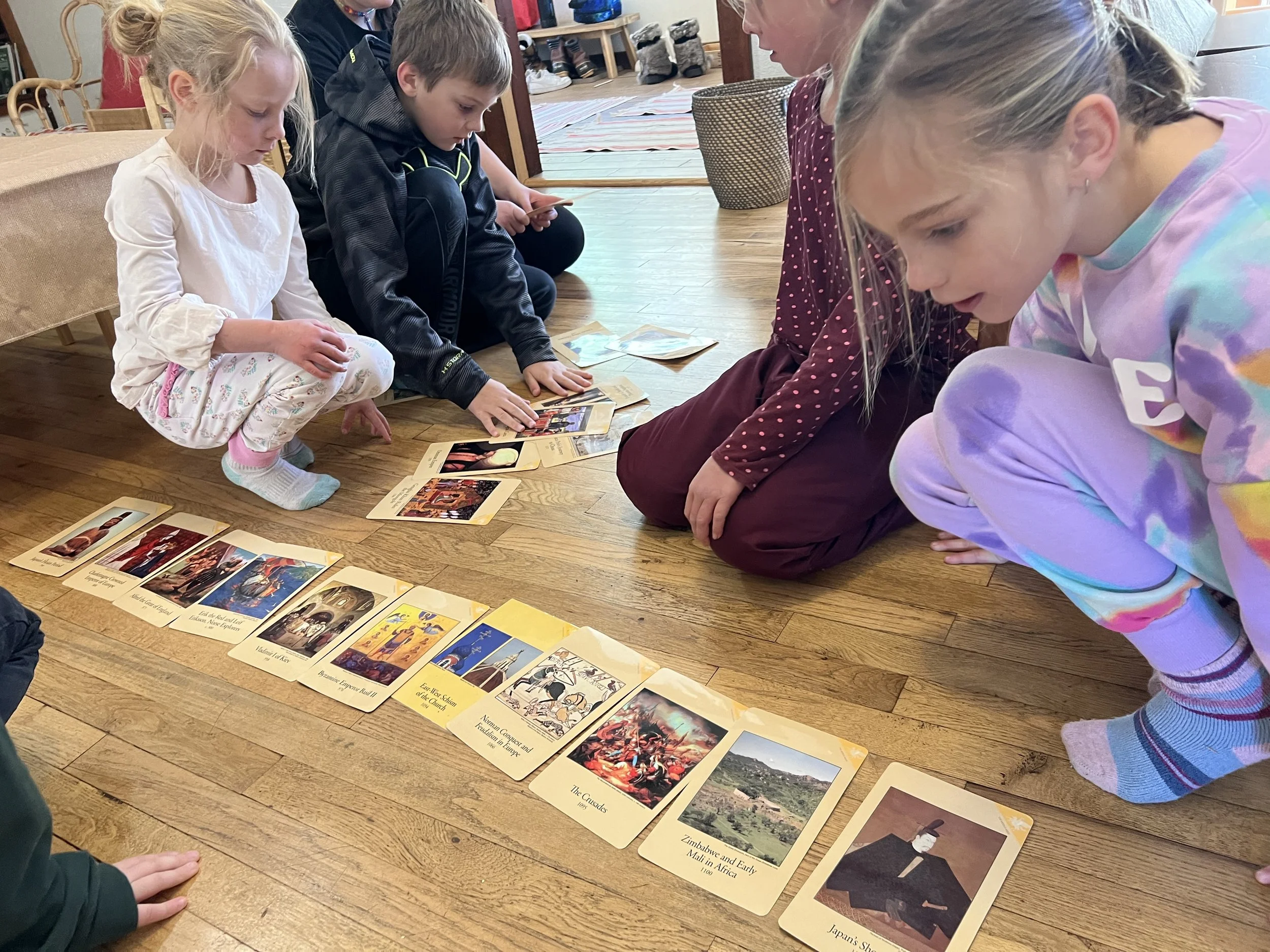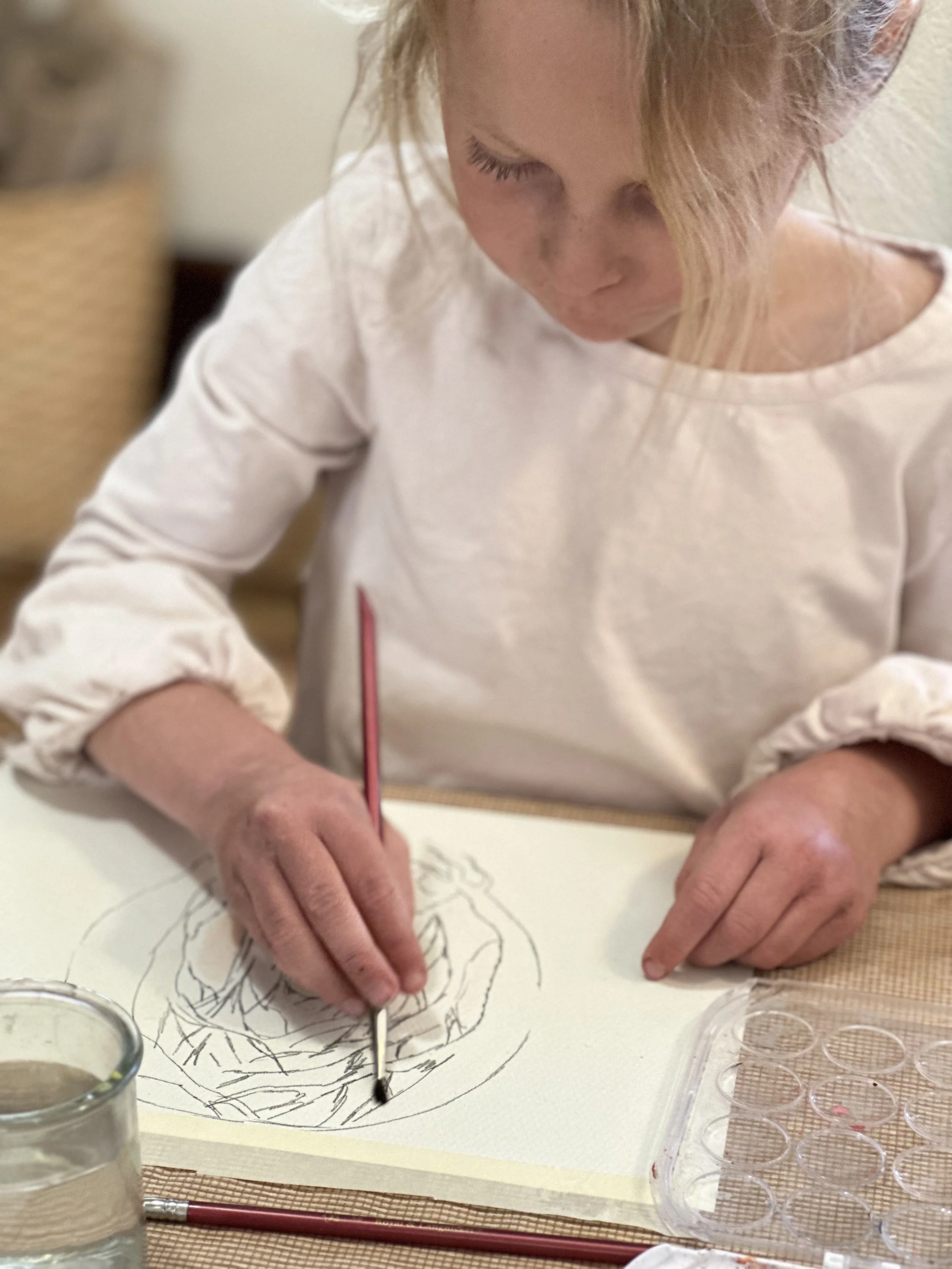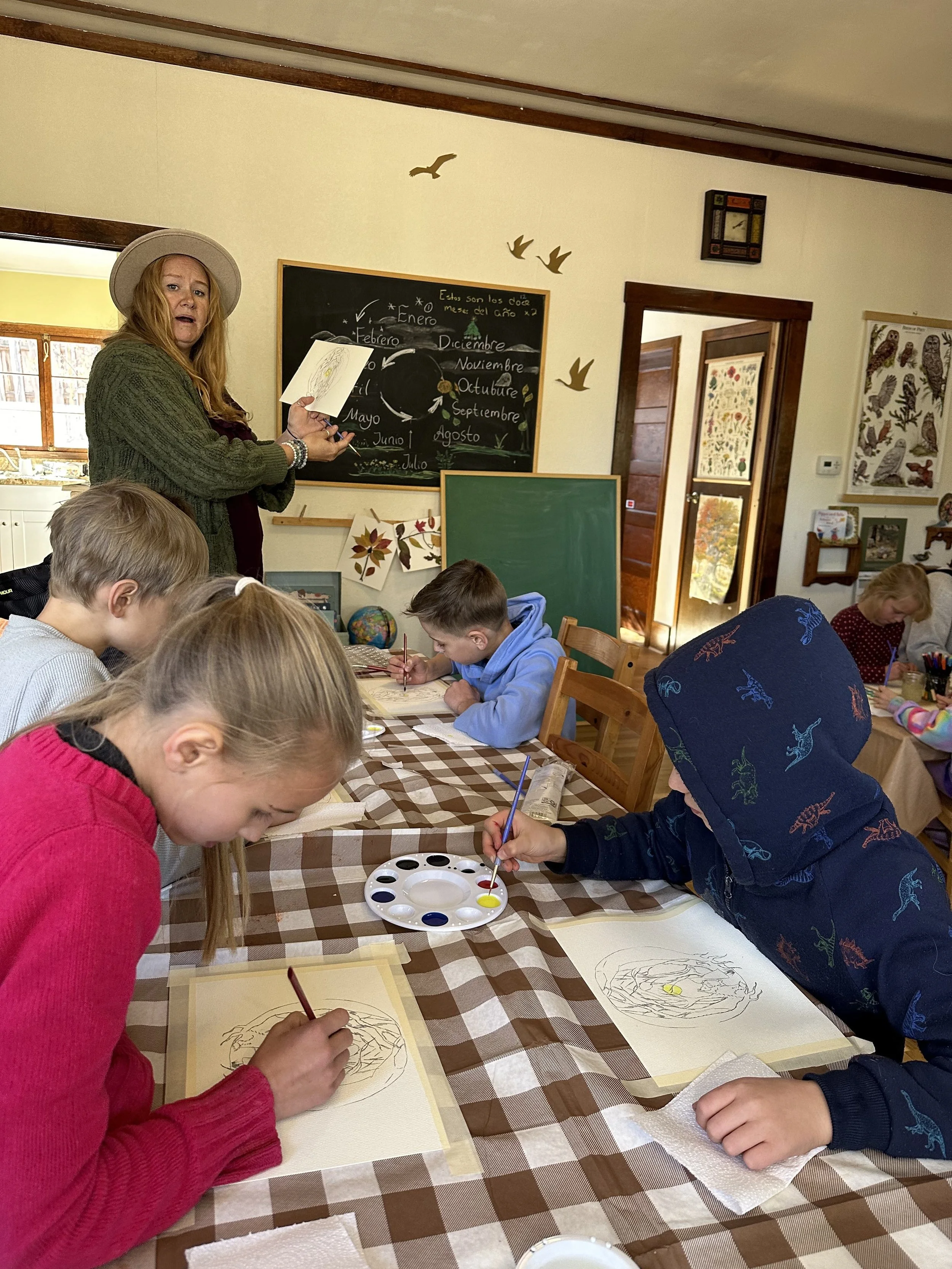
Weave together the chaos into something more transcendent…
November 20th Day in Review: Charles the Hammer, Chamomile, and Water Coloring: A Day of Learning, Painting, and Tea
Some days, teaching feels like a futile attempt to herd cats—cats with strong opinions about snack breaks and side conversations during lessons. But other days, you manage to weave together the chaos into something a little more transcendent. Today was one of those rare, beautiful days when history, art, and herbal remedies collided in a tapestry so rich it made me wonder why more schools don’t do this.
We started the morning with our history, geography, and timeline songs. I know these songs are supposed to help the kids memorize facts, but I secretly think they’re a kind of spell, binding us all together in a shared cadence. (Although some are a little faster than others) There’s something reassuring about chanting the progression of events and dates while small hands form the ASL signs to help them remember the kings and empires. It’s a reminder that no matter how uncertain the world feels, there’s a larger story we’re part of—one that stretches back centuries and promises to keep going.
From there, we dove into the history of Charles Martel, better known as Charles the Hammer. We read about how this resolute Frankish leader turned the tide at the Battle of Tours and shaped the course of European history. Charles was the kind of figure who could have walked straight out of a myth, hammer in hand, and lightning bolts swinging. Or was that Zeus? The kids were fascinated, though it’s always a gamble to say whether they’re more drawn to the story or the nickname itself. Honestly, who wouldn’t want to be called The Hammer? “Adriana The Hammer” has a nice ring to it…
We stayed in our French theme and turned to Charlemagne next, whose name practically demands a flourish and a bow every time you say it. We talked about his role in shaping medieval Europe and fostering learning and art. By then, the kids were fidgeting, so Amy pivoted to our watercolor project—a nod to the storytelling traditions of Europe.
Red Riding Hood, a French fairy tale and also the name of the school we have the privilege of sharing space with, wearing her crimson cloak and her dangerous journey through the woods, became our muse. Teaching watercolor to kids is an act of surrender. You lay out the brushes, you demonstrate the strokes, and then you watch as they take over. What started as “Red Riding Hood” quickly morphed into purple wolves, polka-dotted capes, and one version of the woods that looked suspiciously like a dark purple blob.. 😂 Amy did a wonderful job explaining the different strokes and layering techniques in watercoloring and since it’s only our second foray, I know we will continue to develop the skill and patience to make beautiful works of art!
After lunch, I became an herbalist with a lesson on chamomile. Chamomile has been used for centuries to calm nerves, ease digestion, and soothe the throat and the soul. It struck me as poetic that we’d gone from the battlefields of the Franks to the quiet power of a flower. There’s something grounding about knowing that even in times of conquest and change that someone, somewhere, was brewing tea.
I guided them through making their own tea blends: combining chamomile, licorice root, lavender and anise in their own little potions. In that moment, they were connecting to something ancient and universal—our own quiet rebellion against the noise of the modern world.
By the end of the day, the classroom smelled faintly of chamomile and lavender. Days like this are the real gift of teaching. It’s messy and unpredictable, but every now and then, it feels like you’re part of something sacred—a reminder that learning is less about perfect outcomes and more about the connections we make along the way.




